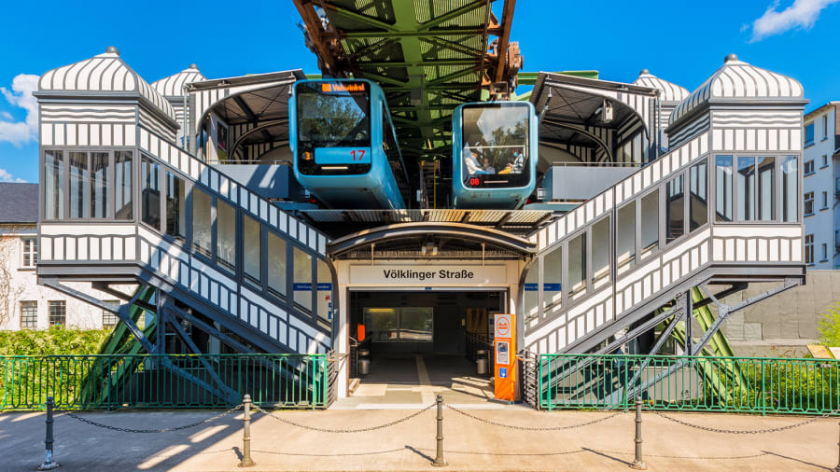Located in the city of Wuppertaler, Western Germany, the Wuppertal Schwebebahn railway has a total length of about 13.3 km, passing through the city and the Wuppert River.

The Wuppertal Schwebebahn railway is considered a groundbreaking and unique idea with the train cars suspended at a height of 12 m or 8 m depending on the terrain below. Currently, the railway still serves more than 80,000 people every day. Over time, the train has been restored and modernized many times to ensure safety and meet the needs of tourists.
Origin
In the late 19th century, as Wuppertal's industry grew, local officials thought they could afford a groundbreaking transport system - a suspended railway. At the same time, other German cities were merely building subways.
In the town of Wuppertal at that time, the local textile industry boomed, causing the area to grow from a small settlement on the Wuppert River into a highly mobile metropolis of 40,000 people. The long and winding river valley made traditional rail or tram options impossible.
In 1893, businessman and engineer Eugen Langen submitted a design for a suspended railway to the city government. Langen had previously experimented with using suspended railways to transport goods at a sugar factory in Cologne. Construction began in 1898 and the railway opened in 1901 at a total cost of $680 million. Emperor Wilhelm II himself attended the test run of the railway, along with his wife, Auguste Viktoria.
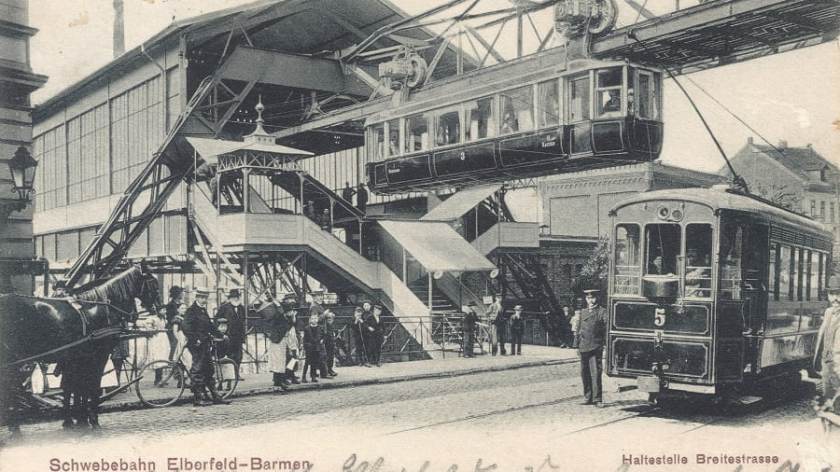
The Wuppertal suspension railway can overcome obstacles such as roads and waterways.
The project used 20,000 tons of steel to create an elevated railway that snaked through the city and had 20 beautiful stations. The glass and wood carriages could carry 65 passengers each. The network was gradually expanded, reaching 13.3 km in length by 1903. The journey began and ended at the junction between Vohwinkel and Oberbarmen stations.
Over the next few years, the length of trains increased from two to six cars, with trains running every five minutes. Passenger numbers then declined as many Wuppertal workers joined the army, but by 1925 the network was carrying 20 million passengers across the Wuppert River.
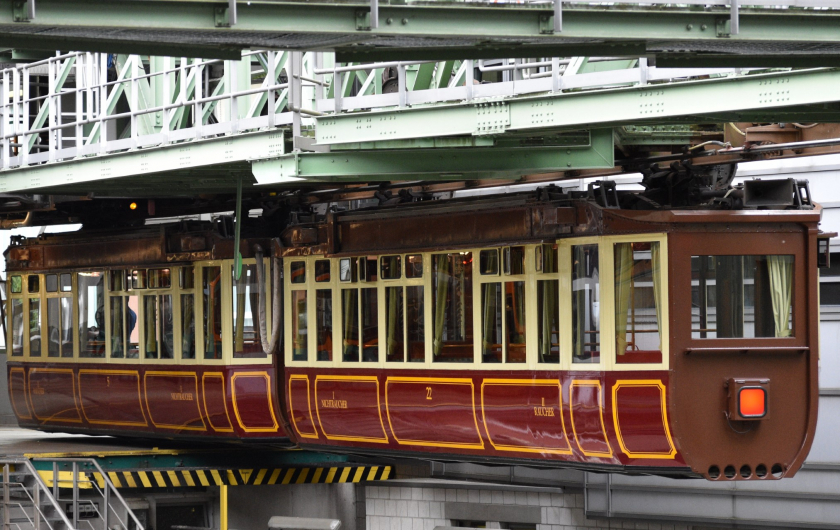
Operating since 1901, the Schwebebahn is the oldest electric elevated railway with suspended cars in the world and one of the few of its kind.
Despite its dangerous appearance, as of 1999, the line was considered the safest form of public transport in Germany, with only a few minor accidents in its nearly 100 years of operation. After a few incidents, the line reopened in 2019 and continues to be widely used by Wuppertale residents.
A unique icon
The suspended tram is by far a safe and environmentally friendly means of transport, running on electricity and producing no emissions. In addition, the tram runs at an elevated altitude, so it will not put pressure on ground traffic. The Schwebebahn has undergone many renovations and modernizations over time. The cars have been replaced with new tram cars with cushioned seats, air conditioning, information screens, LED lights and new motor systems.
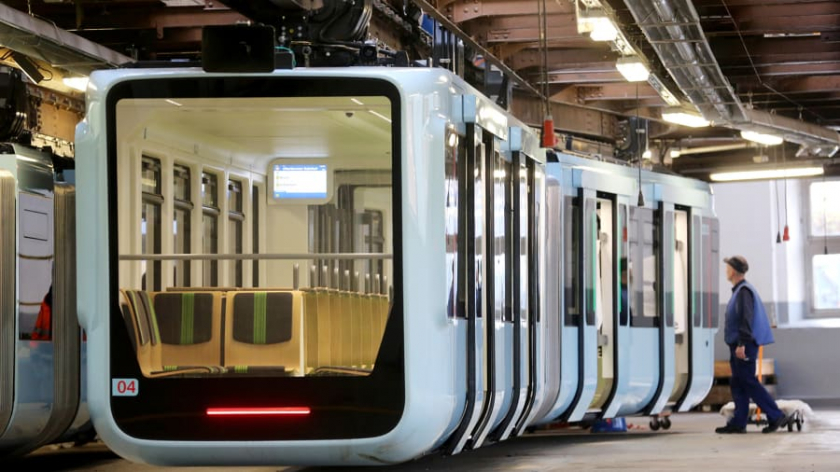
The new tram cars have padded seats, air conditioning, information screens, LED lights and new motor systems.
For rail operators, the advantage of the project is that it helps to relieve traffic jams and intersections, in addition to being fast. Suspended railways are a rare form of transport, so the railway with the upside-down Schwebebah tram also attracts many tourists.
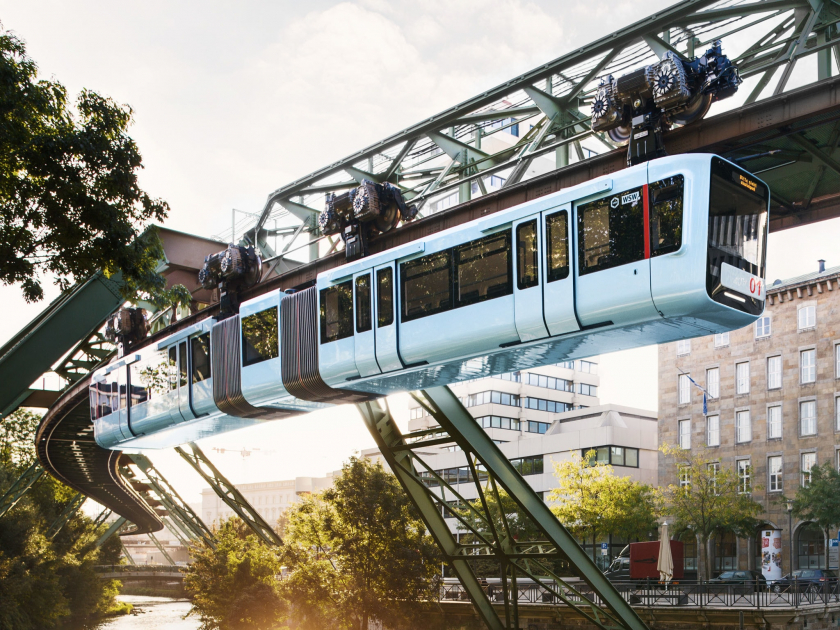
Visitors can enjoy the beautiful view of Wuppertal city.
Not only is the upside-down train a source of pride for the people of Wuppertal, Germany, it is also famous all over the world. Because there are very few cities on the planet that have a public transport system that carries 25 million passengers a year without ever touching the ground.
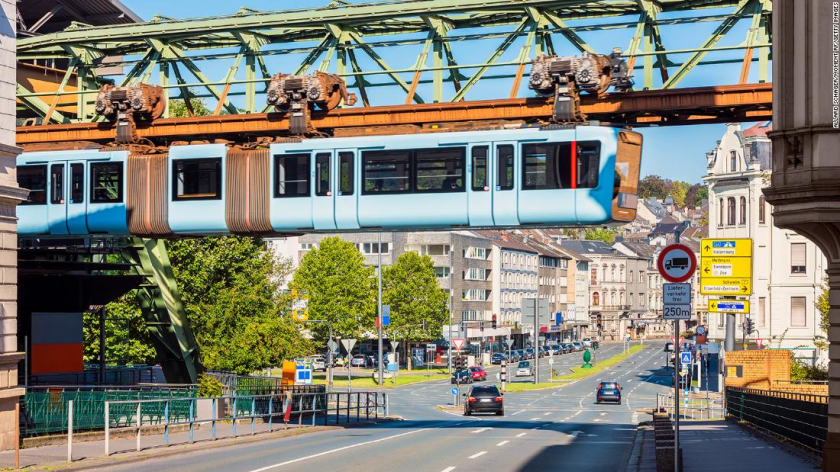
The railway carries 25 million passengers each year.
An interesting fact about this upside down suspension train was that it was launched in 1950. The most famous visitor of Schwebebah was an Indian elephant named Tuffi from the Althoff Circus. Tuffi was not afraid of people around her, so the owner of the circus, Franz Althoff, often took Tuffi around to promote his show.
After a few minutes of train travel, Tuffi began to panic and become agitated. She trampled a row of seats, broke them, and jumped out of a window into the river 10 meters below. Fortunately, she suffered only minor injuries, but the incident made headlines across Germany in July 1950.
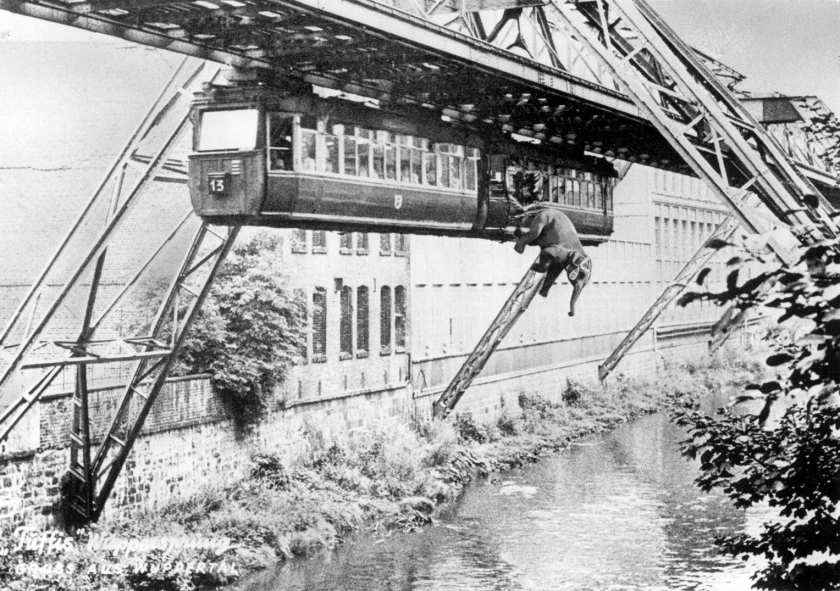
Tuffi the elephant fell from the boat into the river but luckily only suffered minor injuries.
After the above incident of the Indian elephant, the manager requested that passengers are only allowed to bring guide dogs or police dogs on board.

The basalt statue, created in 2020 by artist Bernd Bergkemper, stands on the exact spot where Tuffi landed in 1950.
Today, the Schwebebahn still operates with 25 million passengers a year before the Covid-19 pandemic. The train ticket is valid for 24 hours and costs 7.8 USD (more than 180,000 VND). Passengers can enjoy the trip and admire the 20 stations, from Kluse to Werther Bridge, with eye-catching, modern architecture.
